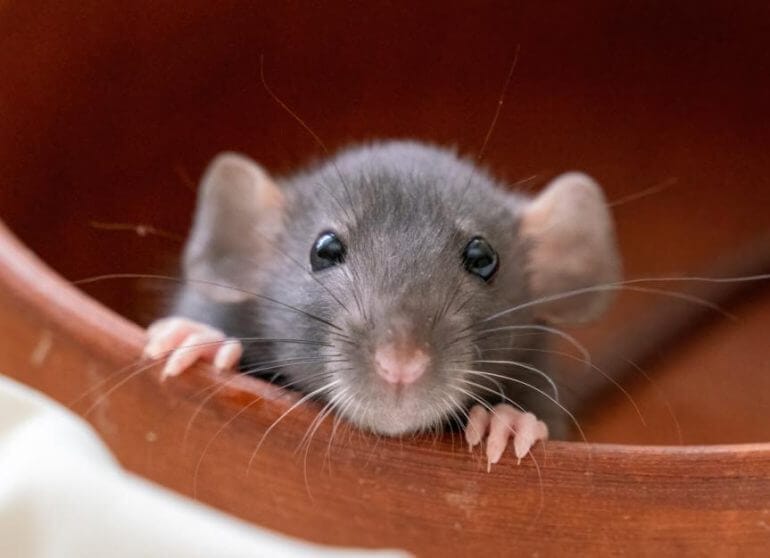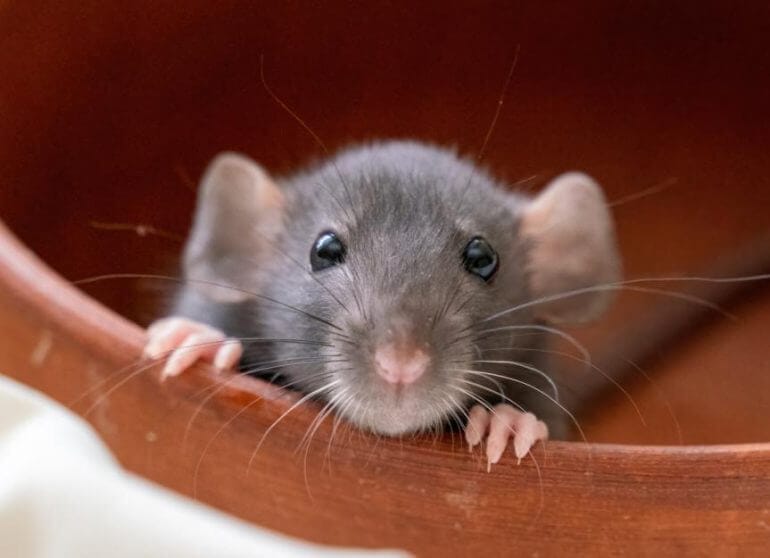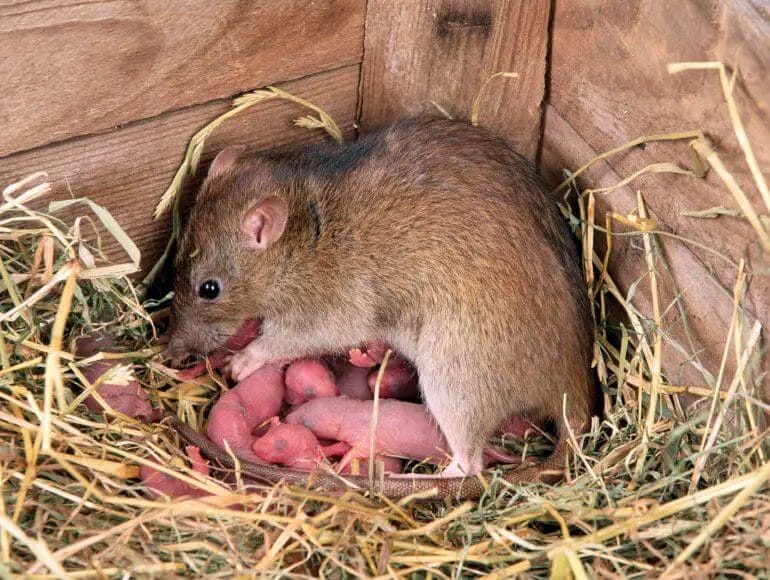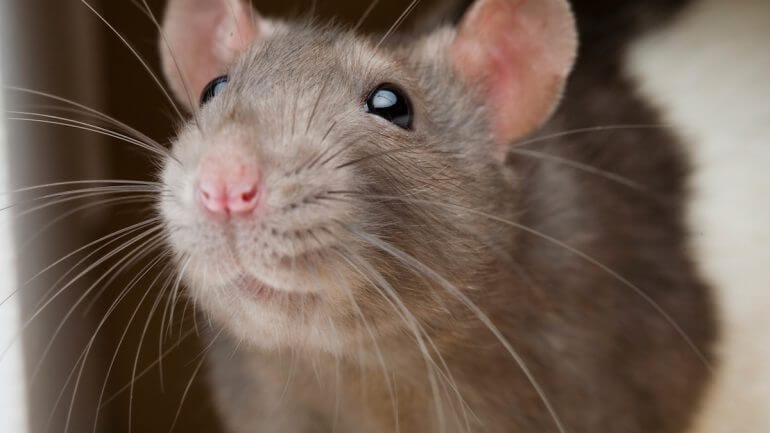Rats are highly adaptable creatures that can be found in a variety of environments, including wooded areas. With their ability to seek shelter and find food sources in the wild, it is not uncommon to come across rats in the woods.
These rodents are known for their agility and excellent climbing skills, allowing them to navigate through trees and vegetation with ease. While they may primarily seek shelter in burrows or nests, rats can thrive in wooded habitats where they can find ample food, water, and suitable hiding spots.

It’s important to note that the presence of rats in the woods can have ecological implications, as they can disrupt natural ecosystems and cause damage to plant life and wildlife populations. Taking necessary measures to control their population can help maintain the balance in these environments.

Adaptations of rats for living in the woods
Rats are highly adaptable creatures that have successfully colonized various habitats around the world, including woodland environments. Their ability to thrive in the woods can be attributed to a number of key adaptations that enable them to find food, navigate their surroundings, and avoid predators.
1. Enhanced sense of smell
Rats have an exceptional sense of smell, which allows them to detect food sources and potential dangers in their woodland habitat. They rely on their olfactory abilities to locate fruits, nuts, seeds, and other edible plant matter that are abundant in the woods. This heightened sense of smell helps them locate food more efficiently, ensuring their survival in a competitive environment.
2. Climbing and tree-dwelling abilities
Unlike their urban counterparts, woodland rats have developed excellent climbing skills, allowing them to navigate through the branches and foliage of trees. This gives them access to food sources and safe nesting sites in elevated locations, away from ground-dwelling predators. Their adept climbing abilities also provide them with an advantage in escaping danger, as they can quickly ascend to higher ground.
3. Camouflage and blending with the environment
Rats living in the woods have evolved to blend seamlessly with their surroundings, making them less visible to potential predators. Their fur coloration often matches the earthy tones of the forest floor, providing them with effective camouflage. This adaptation allows them to move discreetly through the undergrowth and reduces their chances of being detected by predators.
4. Burrowing and tunneling skills
Woodland rats are adept at burrowing and tunneling, enabling them to create intricate networks of underground pathways. These burrows serve as shelter from harsh weather conditions, as well as protection from predators. The ability to create secure underground dens allows them to establish stable colonies and raise their young in a safe environment.
5. Omnivorous diet
Rats are opportunistic feeders and have a highly adaptable diet. In the woods, they make use of their ability to consume a wide variety of food sources. This includes not only plant matter such as fruits, seeds, and nuts but also small insects, worms, and even small vertebrates. Their omnivorous diet helps them thrive in the diversity of food available in woodland environments.
6. Reproduction strategies
Rats have a rapid reproductive rate, with females capable of producing multiple litters in a year. This reproductive strategy is advantageous in woodland habitats where resources may vary seasonally. By having large numbers of offspring, rats increase their chances of survival and colonization in new areas of the woods, ensuring the continuation of their species.
In summary, rats have successfully adapted to living in the woods through enhanced senses, climbing abilities, camouflage, burrowing skills, an omnivorous diet, and reproductive strategies. These adaptations enable them to navigate their woodland environment, find food, avoid predators, and establish thriving populations in this challenging yet abundant habitat.

Behavior and Habits of Woodland Rats
Woodland rats, also known as forest rats, are small rodents that are commonly found in wooded areas and forests. In this section, we will explore the behavior and habits of these fascinating creatures.
1. Nocturnal Nature
Woodland rats are primarily nocturnal animals, meaning they are most active during the night. They have adapted to this lifestyle as it helps them avoid predators and stay hidden from potential threats. During the day, they usually rest in their burrows or nests, which are commonly located in tree hollows, underground, or in dense vegetation.
2. Diet and Feeding Habits
These rats are omnivorous, meaning they eat both plant matter and small animals. Their diet primarily consists of nuts, seeds, berries, leaves, insects, and small vertebrates. Woodland rats are known to be opportunistic feeders, meaning they will scavenge for food in their environment and take advantage of whatever resources are available.
They have sharp incisors that allow them to gnaw through hard surfaces, such as tree bark, to access food sources. Additionally, they are known to hoard food in their burrows or nests for times when food is scarce.
3. Social Behavior
Woodland rats are generally solitary creatures, but they can form small family groups or colonies in certain situations. These groups typically consist of a male rat, several females, and their offspring. The males will defend their territory from other males, ensuring the safety and resources for their family unit.
Communication among woodland rats is largely through vocalizations, such as squeaks, chirps, and clicks. They also use scent marking to establish their territory and communicate with other rats in the area.
4. Nesting and Reproduction
Female woodland rats build nests using various materials, including leaves, grass, and twigs. They create comfortable nests for themselves and their offspring. The gestation period of woodland rats is approximately 21 to 23 days, after which the female gives birth to a litter of 4 to 8 pups.
The pups are born hairless and blind, relying on their mother for warmth and nourishment. After a few weeks, they start to explore their surroundings and become more independent. Woodland rats reach sexual maturity at around 2 to 3 months old.
5. Adaptations and Survival Skills
Woodland rats have developed various adaptations to survive in their forest habitat. Their keen sense of hearing and smell helps them detect predators and locate food sources. They are agile climbers and can navigate through tree branches with ease.
In addition, their fur coloration often blends in with the natural environment, providing camouflage and protection from predators. They are also known for their ability to squeeze through small gaps and cracks, allowing them to access hard-to-reach areas.
6. Impact on the Ecosystem
Woodland rats play an important role in the ecosystem as both consumers and prey. By feeding on various plant materials, they help disperse seeds and contribute to the growth and regeneration of forest vegetation.
They are also a food source for various predators, including snakes, birds of prey, and small carnivorous mammals. Their population dynamics can have an impact on the abundance of predators in an area.
In summary, woodland rats are fascinating creatures with unique behaviors and adaptations that allow them to thrive in forested environments. Understanding their habits and interactions within the ecosystem can provide valuable insights into the delicate balance of nature.

Factors that attract rats to woodland environments
Woodland environments provide an ideal habitat for various species, including rats. Rats are highly adaptable rodents that can thrive in different environments, and woodlands offer them several factors that attract and support their presence. Understanding these factors can help with rat prevention and control measures. In this section, we will explore the key factors that attract rats to woodland environments.
1. Food Sources
One of the primary factors that attract rats to woodlands is the abundance of food sources. Woodlands are home to various plants, trees, and shrubs that produce fruits, nuts, and seeds, which serve as a natural food source for rats. Additionally, woodlands provide a favorable hunting ground for rats as they can find insects, small mammals, and bird eggs to feed on. The availability of food ensures a steady supply for rats and encourages them to settle in woodland areas.
2. Shelter and Nesting Sites
Woodland environments offer rats ample shelter and nesting opportunities. The dense vegetation, fallen trees, brush piles, and rock crevices in woodlands provide the perfect hiding spots and nesting sites for rats. These rodents are nocturnal creatures and prefer dark, secluded areas to build their nests and raise their young. The abundance of such suitable locations in woodlands makes them an attractive habitat for rats.
3. Water Sources
Water is a vital resource for all living creatures, and rats are no exception. Woodlands usually have a variety of water sources, such as streams, ponds, and puddles. These water sources provide rats with hydration and serve as a breeding ground for aquatic insects and other small organisms, which rats can feed on. The availability of water in woodlands makes them more appealing to rats as they fulfill their basic survival needs.
4. Lack of Predators
Rats are opportunistic animals that prefer environments with minimal threats or predators. Woodlands, especially those disturbed by human activities, often have a lower presence of natural predators that would prey on rats. This lack of predators creates a safer environment for rats to thrive without constant threat, making woodlands an attractive location for their settlement.
5. Suitable Climate
The climate in woodland environments can also play a role in attracting rats. Rats are adaptable to a wide range of climates, but they prefer temperate or mild weather conditions. Woodlands with a moderate climate provide rats with favorable conditions for survival, such as milder winters and abundant food and water sources throughout the year. This climate suitability further enhances the attractiveness of woodlands for rats.
In summary, several factors make woodlands an attractive habitat for rats. The abundance of food sources, including fruits, nuts, seeds, and prey animals, provides rats with a steady food supply. Woodlands also offer rats ample shelter and nesting opportunities due to the dense vegetation and various hiding spots. Water sources in woodlands provide hydration and a breeding ground for prey organisms. The lack of natural predators in woodlands creates a safer environment for rats, while the suitable climate ensures their survival. Understanding these factors can help in developing effective rat control strategies in woodland environments.
Impact of Rats on Woodland Ecosystems
Rats, although small in size, can have a significant impact on woodland ecosystems. These rodents are known for their ability to reproduce rapidly and thrive in various habitats, including woodlands. Their presence in these ecosystems can disrupt the delicate balance and functioning of the natural environment. Let’s explore the different ways in which rats affect woodland ecosystems.
1. Predation
Rats are opportunistic predators that feed on a wide range of organisms, including small vertebrates, invertebrates, and bird eggs. In woodlands, they often prey on native birds, reptiles, amphibians, and small mammals. This predatory behavior can lead to a decline in the population of these species, disrupting the natural food chain and biodiversity of the woodland ecosystem.
2. Seed Dispersal
Rats are known to feed on seeds and fruits found in woodlands. While foraging, they inadvertently disperse these seeds through their feces. However, unlike some other animals that aid in seed dispersal, rats do not disperse seeds in an organized and beneficial manner. Instead, they tend to concentrate the dispersal of seeds in specific areas, leading to uneven distribution and potential overgrowth of certain plant species.
3. Habitat Destruction
Rats are skilled burrowers and can create extensive underground tunnels and nests within woodland ecosystems. These burrows can destabilize the soil structure, leading to erosion and the collapse of plants and trees. Rats may also damage tree trunks and roots by gnawing on them, weakening the overall stability of the woodland habitat.
4. Disease Transmission
Rats are known carriers of various diseases that can be transmitted to other animals and even humans. In woodlands, where several species coexist in close proximity, the presence of rats can increase the risk of disease transmission. Diseases such as leptospirosis, hantavirus, and salmonellosis can have detrimental effects on the health of woodland animals, further impacting the overall ecosystem dynamics.
5. Competition for Resources
Rats are highly adaptable and resourceful creatures, capable of thriving in a variety of environments. In woodlands, their presence can lead to increased competition for limited resources such as food, water, and nesting sites. This competition can put additional stress on native species, potentially leading to reduced reproductive success and an imbalance in the woodland ecosystem.
6. Impact on Plant Diversity
Rats have the potential to disrupt the natural plant diversity of woodlands. Their feeding behavior often targets specific plant species, leading to a decline in their population. This can result in a shift in the composition of the woodland vegetation, favoring certain plant species over others. Such changes can have cascading effects on other organisms that depend on specific plant species for food and shelter.
In summary, rats can have a significant impact on woodland ecosystems due to their predatory behavior, seed dispersal patterns, habitat destruction, disease transmission, resource competition, and impact on plant diversity. It is important to implement effective rat control measures to mitigate their negative effects and preserve the balance and biodiversity of woodlands.
FAQs
Do rats live in the woods?
Yes, rats can be found in wooded areas. However, they are more commonly found in urban and suburban environments where they have access to food and shelter.
Conclusion:
In conclusion, while rats are commonly associated with urban environments, they can also be found thriving in woodland areas. These resourceful creatures have adapted to different habitats, including forests and woodlands, where they make their nests and search for food. Despite their reputation as pests, rats play an important ecological role in these environments, serving as prey for predators and contributing to nutrient cycling. So, if you ever find yourself exploring the woods, don’t be surprised if you come across these resilient rodents.
